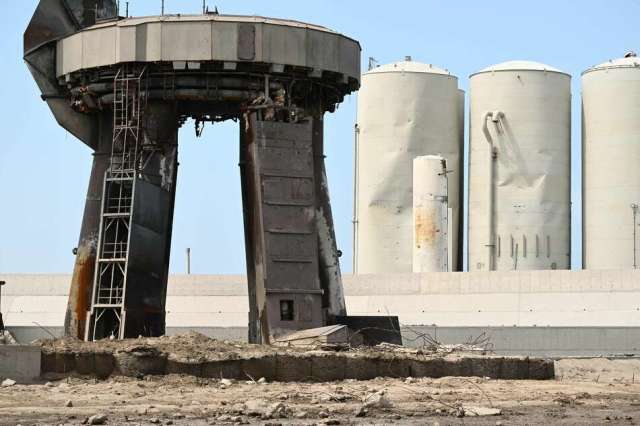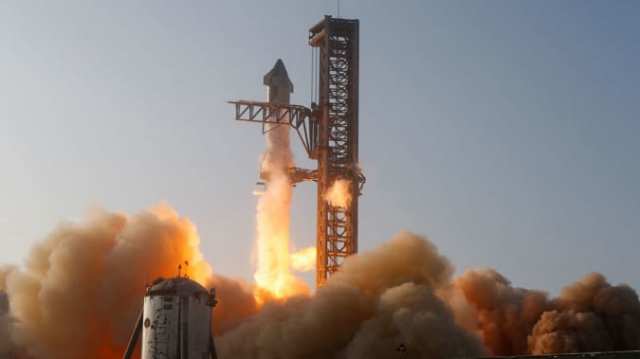According to him, the concrete fragments have nothing to do with it, and the causes of the accident are fundamentally different. In addition, he expects an unrealistically fast next launch of a new spacecraft.
On April 29, 2023, Musk, in a chat only for subscribers from his Twitter account, made a number of statements about the accident that happened during the first launch of Starship into space and the prospects for the next tests. According to him, the launch that happened first "had about the outcome I had hoped for, and, perhaps, slightly exceeded my expectations." He considers two points to be the key result of the first Starship tests (before that, only the second stage of the same name, integrated with the ship, was tested). Firstly, the fact that the carrier immediately managed to fly away from the launch pad, and secondly, that he managed to send data from the period before overcoming the maximum speed pressure .
He also stated: "Oddly enough, we do not see [in the data received from Starship during the tests] evidence that the "stone tornado" really damaged the engines or thermal protection in a significant way. It could have happened, but we still have no evidence of it." By "stone tornado", Elon Musk meant a massive flight of pieces of heat-resistant reinforced concrete from the launch pad in all directions. That collapsed from the operation of the Starship first stage engines at 80 percent of full power. Earlier, the same site underwent static tests, in which three dozen first-stage engines operated at 50 percent power.
Large fragments of concrete scattered within a radius of about a kilometer from the launch pad, small particles — up to 10 kilometers from the launch point. To prevent this from happening again next time, SpaceX plans to install a steel water-spraying device directed upwards and cooled by large volumes of water under the Starship launch "stool". It will have to suppress dust formation and cool the launch pad sufficiently to avoid its destruction.
What was the cause of the accident of the tested carrier, if not a "stone tornado"? Firstly, immediately after the launch, three Raptor engines out of 33 failed or were disabled by the Starship self-diagnosis system (but did not explode). With 30 engines, the rocket could still reach space. However, at the 27th second of the flight, engine No. 19 failed, and at the same moment some event tore off part of the thermal protection around this engine and three others. At that moment, according to Musk, clearly distinguishable flames were coming from the stern of the rocket. After that, Starship could not reach space, but the tests continued to get a more complete picture of the passage of the atmosphere.
At the 62nd second, the thermal protection of engine No. 30 was damaged, although, oddly enough, it continued to work at the same time. On the 85th, another engine failed, after which the ability to control the Starship thrust vector was lost. Unusually, after the flight operators gave the command to self-detonate the rocket (so that it would fall in a safe area of the sea without hurting anyone), the rocket did not collapse for another forty seconds. Usually the self-detonation charge works immediately or does not work at all. It is not entirely clear why it worked this time, but with such a significant delay.
Elon Musk's statement that the next Starship tests may take place in two months looks absolutely amazing. Although the company actually has ready-made carriers (and more than one), the repair of the launch pad should be quite difficult and time-consuming. How all this can be done in two months is not clear. It is possible that the launch date will shift, and in reality the second tests of the assembled carrier will take place in the fall.
Interestingly, Musk believes that the ready-made first stages of Starship have significantly more reliable Raptor engines and thermal protection to them than the stage that took off from Boca Chica on April 20, 2023. And, thus, radical processing of the material part of the carriers for the following tests is not necessary. The head of SpaceX believes that in the next tests, the carrier has a significant chance of passing the stage of separation of the first and second stages, and the first stage will be able to reach space "with chances above 50 percent."

The starting “stool” was damaged during launch, and nearby containers with the necessary liquids crushed the wreckage. However, it was still planned to replace these containers with new ones with better thermal insulation.Image source: PATRICK T.
FALLON/AFP
By the end of the year, in his opinion, this figure will rise to 80 percent or more, and in the next 12 months — to 100 percent. These are extremely optimistic estimates, considering how much larger Starship is than any other rocket in Earth's history, and how different it is from all its predecessors that have ever existed in other parameters, not just in size and mass. Suffice it to recall that before this carrier, none had full-flow liquid rocket engines with full gasification of components.
According to the plan, if the next launch is successful, the Starship will have to make a suborbital flight and fall into the sea near Hawaii. The suborbital trajectory is chosen so that in case of failure of the control of the second stage in orbit, it would still fall in the right area, and not unknown where, as could happen if the control system fails in an orbital flight.
According to Musk's estimate, his company's total costs for the Starship program this year will be about two billion dollars with four to five test launches. This amount consists not only of the launches themselves, but also of the program of gradual modernization of the cosmodrome — installation of a water cooling system and dust suppression on the launch table, replacement of fuel tanks with vacuum insulation and a number of other measures.

